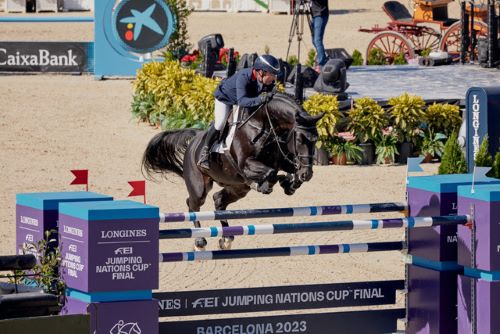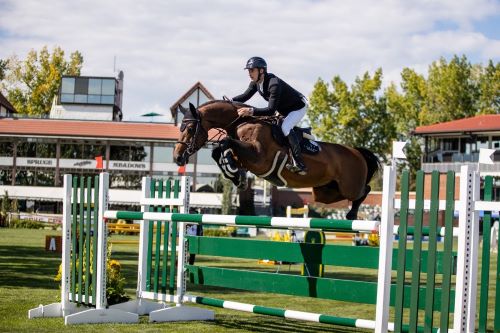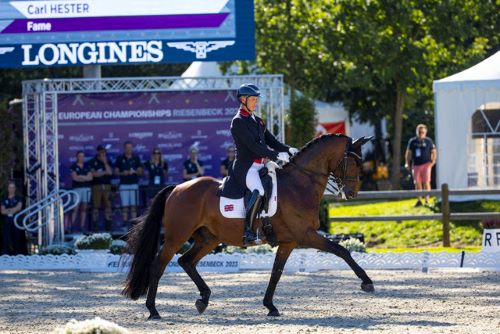Photo: Michelle Gough
Maybe you can imagine the frustration of having a vaccine that is proven to cure cancer, but not having the money to produce and distribute the cure. Even as people are dying.
That is the kind of frustration that we are dealing with in regard to saving wild horses! We have the cure for the wild horse management debacle. Now we just need the money to get the cure effected.
Unfortunately, an industry-wide slowdown in funding, partially caused by more nonprofits than ever entering into the wild horse nonprofit marketplace, is diluting donations and slowing progress on our projects critical to implementing a permanent, humane, and natural solution to keep American wild horses wild and free.
People are being fooled into funding the widespread sterilization (a.k.a.: Fertility Control) of wild horses to augment the genetic damage being inflicted by reducing populations via BLM roundups. This slowdown in funding is coming at a time when some people are asking and pleading with us, “Is there any way we can get the Wild Horse Fire Brigade plan accomplished faster?” Of course there is, but it takes proper funding… we can only go as fast as our budget allows us.
Stanford produced a white paper that addresses the serious issues that arise from under funding a worthy nonprofit:
The Nonprofit Starvation Cycle
“Funders must take the lead in breaking a vicious cycle that is leaving nonprofits so hungry for decent infrastructure that they can barely function as organizations — let alone serve their beneficiaries.”
(Note: In the case of Wild Horse Fire Brigade, the ‘beneficiaries’ are the wild horses being abused, tortured, and on the brink of extinction.)
“Our research reveals that a vicious cycle fuels the persistent underfunding of overhead. The first step in the cycle is funders’ unrealistic expectations about how much it costs to run a nonprofit. At the second step, nonprofits feel pressure to conform to funders’ unrealistic expectations. At the third step, nonprofits respond to this pressure in two ways: they spend too little on overhead, and they underreport their expenditures on tax forms and in fundraising materials. This underspending and underreporting in turn perpetuate funders’ unrealistic expectations. Over time, funders expect grantees to do more and more with less and less — a cycle that slowly starves nonprofits.”
Sure, we’ve gotten some great national media exposure, and we’re very grateful for it. But people incorrectly assume that will be the ticket and we should now have financial wings when it’s not the case. Honestly, national media articles help build brand recognition, reputation, and equity, but are less effective at bringing in donations these days than in prior years.
Until we can secure a major grant or large-scale donor, or a solid following of monthly donors, which as a newer nonprofit, we don’t have yet, our progress is restricted by budget.
We are far from having the kind of financial support we need to fully and speedily execute our novel, multifaceted approach to change the ongoing disastrous wild horse management and 30 years of failed advocacy.
Doing more of the same isn’t going to save wild horses in a manner that provides sustainable, humane, natural conservation that keeps them ‘wild & free’.
Too many people keep ignoring the evident facts that wild horse roundups have been greatly accelerated in coordination with horrific sterilization programs, both of which are carefully and scientifically designed to decimate wild horse populations.
This is the Bureau of Land Management’s end game. And the biggest nonprofits are cashing in on the BLM’s plan, to the great detriment of wild horses.
Our end game is to use the combined experience of our team, along with the unparalleled extensive knowledge and experience, gained by managing our herd of 150 free roaming wild horses in a wilderness for the past 9 years, including during a catastrophic wildfire, to re-wild and relocate tens of thousands of wild horses into appropriate remote wilderness areas on parts of both public and privately owned remote wilderness.
There is approximately 353 million acres of privately owned for forests in America. About 50 million acres of that is very remote and unsuited for livestock, but ideal habitat for wild horses, that can make these areas more wildfire resilient.
Of the 115 million acres of publicly owned ‘designated wilderness’ (unsuited for livestock), all of which is at grave risk of incineration by wildfire, at least 30 million acres of that is very remote ideal habitat for wild horses. We only need to utilize a total of 20 million acres in order to re-wild/relocate 100,000 horses at the rate of 1 horse per 200 acres.
Here’s what we have in progress that can change everything for American wild horses:
(1) Our pilot herd of wild horses helped CALFIRE to stop a deadly 38,000 acre, wind driven catastrophic wildfire from incinerating the national treasure called the Cascade Siskiyou National Monument. THIS IS A CASE STUDY. And we need to continue our ongoing research with this case study herd. We are needing to acquire some electronics for an advanced tracking system for our lead mares. This will open the door to much more important scientific information. The telemetry package (electronics, etc.) we need costs $20k. We currently don’t have that in our budget.
By way of the wildfire fuels management year after year, when the fire struck in 2018, the fuels had been managed by the wild horses and were minimal, and that made CALFIRE’s wildfire suppression efforts more effective.
Our herd of wild horses had created and maintained a fire resilient landscape year-round, and they can do the same job elsewhere.
Saving what we can right now – working with our extended family of volunteer advocates, we have rescued 60 mustangs that would have ended up in a Mexican slaughter plant. Here is a video showing one of the groups that has their freedom restored: https://www.youtube.com/watch?v=ntqV QeeVMs.
We must continue to offer the lesson from our wild horse management experience to legislators, forest managers, firefighters, ecologists, and wild horse advocates. Our empirical experience transcends textbooks, academic hypotheses, and certainly BLM mythology.
We can teach and inform others. Education is one of our key strategies, and will help our future re-wilding partners to understand how and why our plan works, and how to successfully scale our plan onto very large landscapes of 100,000 acres and larger.
(2) Articles & publications:
Anyone who has been college educated can recall the huge time requirement and effort to write a term paper, right?
Now imagine having to crank out a term paper every week, for years in a row! That’s what we’ve been doing, and we have NO STAFF. Of course, that’s on top of dealing with hundreds of emails per week, phone calls, etc.
In addition to doing daily field work in the wilderness with wild horses and all the chores it takes to live off grid in the wilderness, Wild Horse Fire Brigade’s founder William Simpson and co-researcher Michelle Gough have been producing articles and papers weekly that average 2,500 words each (in Simpson’s case, for the past 9 years).
We must continue authoring and publishing articles and white papers that inform decision makers and educators about the genuine value of maintaining natural herds of wild horses on the appropriate landscapes. This is a very time-consuming endeavor (writing researched articles and getting them published).
Wild Horse Fire Brigade’s founder, William E. Simpson, is a professional writer and published author (Ulysses Press), and recognized by Simon and Schuster: https://www.simonandschuster.com/authors/William E Simpson/169118167.
A few of our published articles and informational stories are platformed on our website (www.WHFB.us), providing the public with quick single point access to important, accurate information about wild horses.
Many other articles are published elsewhere, such as these example outlets:
*Pagosa Daily Post (Colorado): https://pagosadailypost.com/author/william simpson/
*HorseTalk (New Zealand): https://www.horsetalk.co.nz/author/billsimpson/
* Sierra Nevada Ally: https://sierranevadaally.org/author/william e simpson ii/
(3) Utilizing our wilderness research station/ranch:
Our free roaming wild herd in the wilderness coupled with our onsite research station can serve as a center for the college field studies of wild horse ecology and ethology. This could turn out a new army of resource managers into the real world who know the truth of wild horses.
Our research station/ranch is set in the wilderness among a herd of free roaming wild horses. This provides our team with the opportunity to have visiting university students and scientists to learn about wild horses using what we call the ‘Goodall Method’. Through an alliance with an accredited University, we hope to soon be offering a certificate or fellowship program in Wild Horse Ecology Ethology.
(4) Video and photographic education:
Producing documentaries and edutainment videos that can help inform the public at large. We have already produced over 230 such videos. Some of these videos have thousands of views, and provide a library of video information to the public. We need to get the word out about this body of work.
(5) TV, radio, and internet interviews:
Bringing out the truth about wild horses and their importance on the American landscape is vital to our mission, and yet another important way to inform the general public. Wild Horse Fire Brigade’s founder spends dozens of hours every month preparing for and giving interviews, on site at the ranch, on the radio, on TV, and via the internet and webinars.
Recently, Wild Horse Fire Brigade’s Vice President, Kelsey Stangebye, authored an outstanding paper that was published at Midwest Reining Horse Association’s magazine, and can be read here: https://drive.google.com/file/d/1mZWo2FJd1D1RtK2AWCq8yQK2sYBVcauM/view?usp=sharing
Thank you for reading this, and please do share it.
Please donate here.
Visit www.wildhorsefirebrigade.org for more information.









